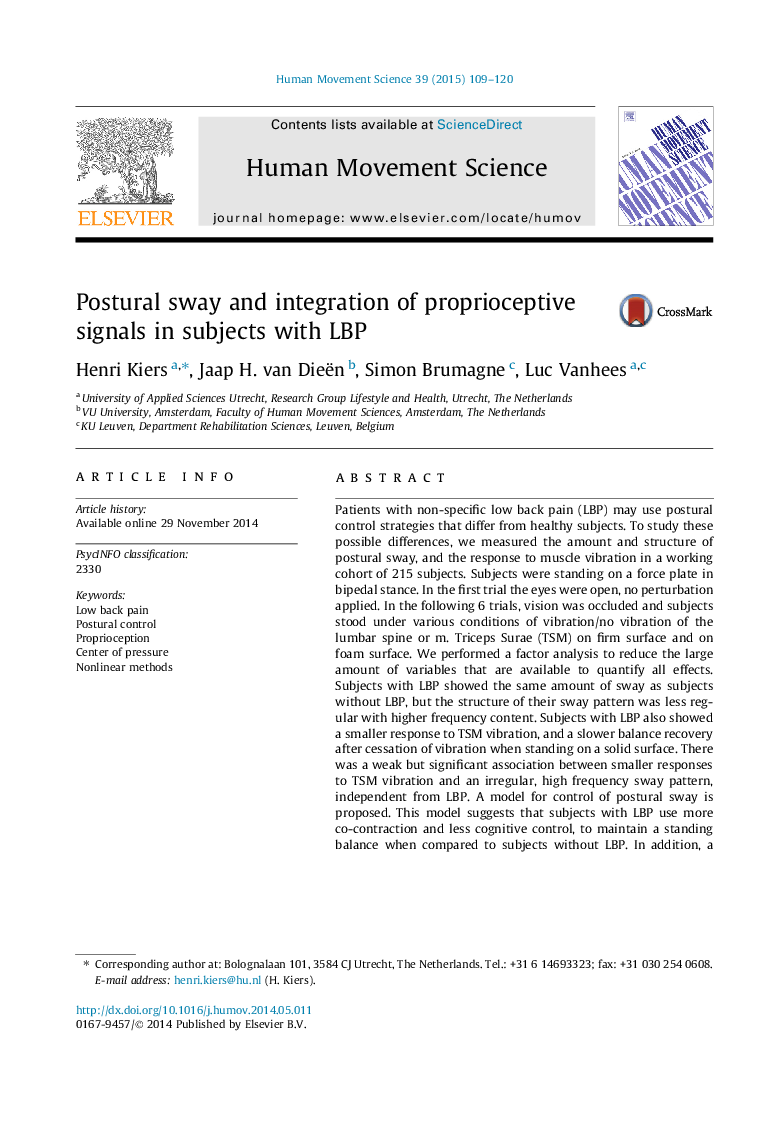| Article ID | Journal | Published Year | Pages | File Type |
|---|---|---|---|---|
| 928293 | Human Movement Science | 2015 | 12 Pages |
•We examined a cohort of 215 subjects from a working population.•We analyzed the amount and structure of center of pressure movement, and effects of muscle vibration.•Subjects with low back pain showed a less regular sway pattern with higher frequency content.•Subjects with low back pain also showed less response to muscle vibration of the m. Triceps Surae.•Results suggest that low back pain patients use more co-contraction and less supraspinal control.
Patients with non-specific low back pain (LBP) may use postural control strategies that differ from healthy subjects. To study these possible differences, we measured the amount and structure of postural sway, and the response to muscle vibration in a working cohort of 215 subjects. Subjects were standing on a force plate in bipedal stance. In the first trial the eyes were open, no perturbation applied. In the following 6 trials, vision was occluded and subjects stood under various conditions of vibration/no vibration of the lumbar spine or m. Triceps Surae (TSM) on firm surface and on foam surface. We performed a factor analysis to reduce the large amount of variables that are available to quantify all effects. Subjects with LBP showed the same amount of sway as subjects without LBP, but the structure of their sway pattern was less regular with higher frequency content. Subjects with LBP also showed a smaller response to TSM vibration, and a slower balance recovery after cessation of vibration when standing on a solid surface. There was a weak but significant association between smaller responses to TSM vibration and an irregular, high frequency sway pattern, independent from LBP. A model for control of postural sway is proposed. This model suggests that subjects with LBP use more co-contraction and less cognitive control, to maintain a standing balance when compared to subjects without LBP. In addition, a reduced weighting of proprioceptive signals in subjects with LBP is suggested as an explanation for the findings in this study.
